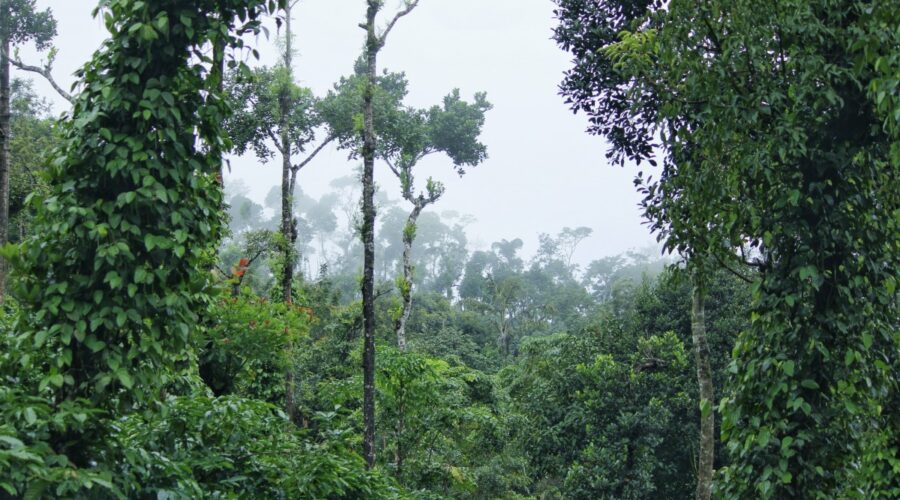Following a recent initial blog article on the impact of Covid-19 on global meat supply chains, it is becoming increasingly clear, that coronavirus impacts on the global economy and food supply chains are placing critical pressure on the Amazon. As forest governance is being weakened and major market policy developments are reported, we risk losing the opportunity to address their threats to the Amazon forest. The current pandemic is absorbing all public attention and shadows the existing risks for the Amazon forest and the globe.
Forest fires are rising again in Brazil and Bolivia
Forest fires are once again rising at an alarming level in Brazil and Bolivia. In the Brazilian Amazon, deforestation in the past 12 months surged 40 percent year-on-year to the highest level on record for Brazil’s public deforestation monitoring system DETER. In Bolivia, public authorities are reporting a massive rise for the first four and a half months of 2020, up 30 percent year on year and up 85 percent compared to the average of the past five years. In 2019, record forest fires were reported and in the case of Brazil, there is now evidence that indicates that large areas of forest which burned down last year are being converted to agricultural land.
Weakening of public measures endangers the forest
In both countries, permissive law enforcement and the weakening of public measures intended to prevent forest fires and ultimately deforestation have left large forest areas unprotected. Public and private interests driving soy and cattle expansion in the region are being stimulated by short- and long-term market signals in China. Since 2018, swine fever in China has depressed soy export prices and increased demand for meat from Brazil, putting additional pressure on Amazonian rainforests.
Restrictions on US soy exports to China due to the US-China trade war caused a price premium on Brazilian soy exports in the second half of 2018, as Chinese demand for Brazilian soy raised expectations at the Brazilian soy producer level. Soy export prices before and during the soy planting period, which in Brazil lasts from September to November, are key drivers of soy planting intentions. In the case of Bolivia, Bolivian and Chinese authorities reached an agreement authorizing soy exports to China, which until then were primarily destined to Colombia and Peru as well as to authorize beef meat exports which are expected to increase exports from their currently insignificant levels.
Covid-19 does not hamper soy and meat exports
The Covid-19 pandemic and its associated economic slowdown could have reduced the economic pressure on the expansion of soy and meat production. However, China’s increase in demand has led the opposite to happening. So far, during the first four months of 2020, there has been a 73 percent year-on-year increase of Brazilian soy export volume, three-quarters of which went to China. Brazilian meat export volumes are at the same level as last year, but their value has increased by 19 percent compared to 2019 and the share destined for China also rose from 18 percent to 37 percent of total meat exports.
Although some top soy and meat companies have indicated that shipping meat from major soy and meat exporting countries, such as the US, Argentina, and Australia, has met with logistical challenges, they still report significant profits and an increase in stock values. Brazil managed to maintain its supply chain operations to a large extent while other exporters did not manage to do so, giving Brazil a distinct advantage and consolidating its control of the meat and soy supply chain.
Bolivia’s new government supports the agro-industry
In Bolivia, soy export volumes and value in the first trimester of 2020 have remained similar to 2019 and 2018 levels. However, in November 2019 a transitional government assumed power, and some of the most important ministries (such as the ministry of economics, rural development and land, and environment) are now headed by former representatives of the agro-industry.
The new heads of the ministries have drastically reduced procedures to evaluate and authorize Genetically Modified Organism (GMO) varieties, and at the same time, they have maintained the authorization to use forest fires without sanctions. However, in a reaction to concerns by civil society, the government stepped back from its initial decision to reduce the evaluation procedure of GMO varieties from 60 days to 10 days, now settling on 40 days. A very small victory, in the fight against agroindustrial dominance.
Another year with vast forest losses could tip the balance
As South America’s dry season approaches, forest fires are expected to increase and the tragic loss of vast areas of forest last year could be repeated. In both Brazil and Bolivia civil society is trying to raise public awareness about the impact of private and public interests’ alignment in favor of an expansion of soy and meat supply chains. However, with global and national attention focused on COVID-19, and in particular in the case of Brazil, on the criticism of the management of the crisis by authorities, the threats to the Amazon forest are treated as a secondary issue.
Civil society is stepping up to raise awareness on the link between Covid-19 and forest depredation, while the current forest fires are getting us very close to an uncertain tipping point and foreseeable ecological disaster for the whole eco-region and the world. Although it is important to raise awareness of the link between Covid-19 and forests, it is key to keep a close eye on the current threats to the Amazon and most important to advocate for drastic and effective actions!


